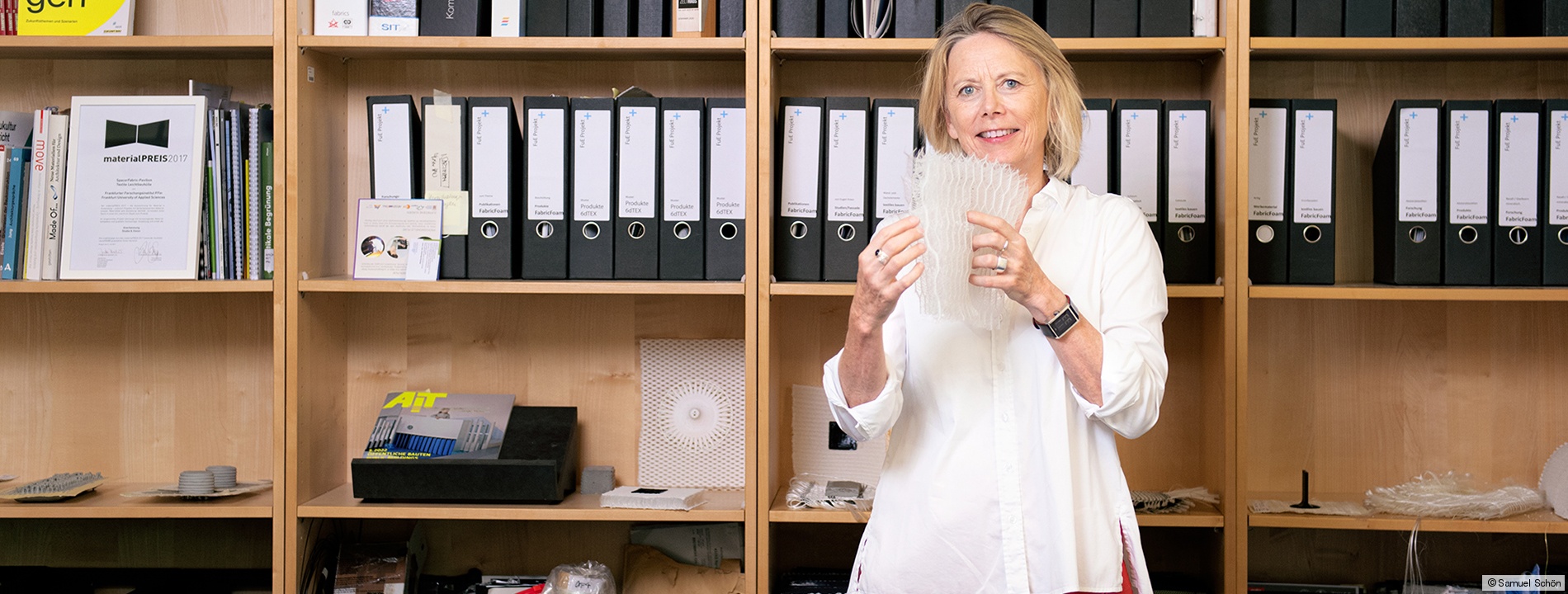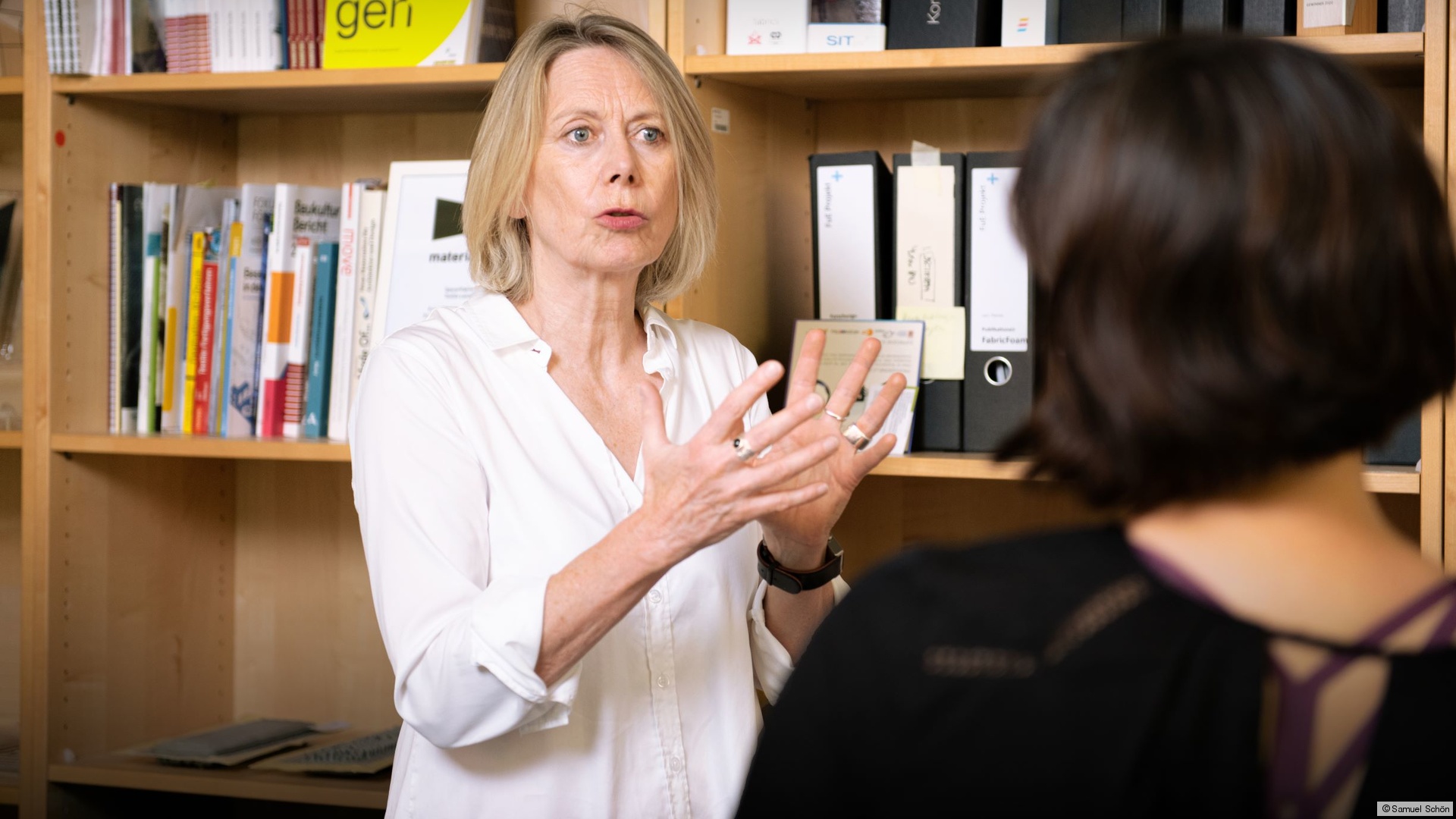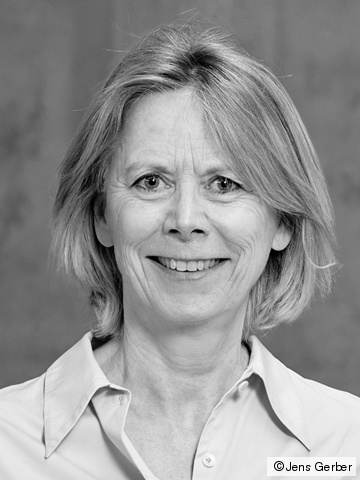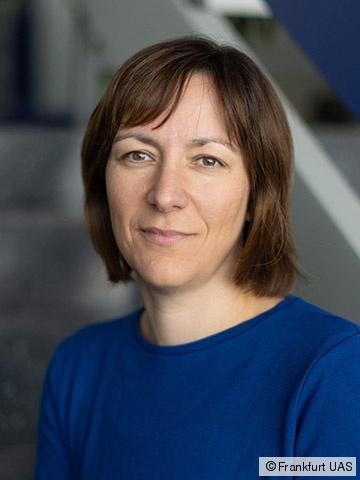The Innovation Project
The topics "Lightweight textile construction" and "Solar construction" are the focus of Prof. Claudia Lüling's research to date. The "ge3TEX - Woven, knitted, foamed: 3D textiles" project has received several awards, e.g. as a finalist in the DGNB Sustainability Challenge 2021. As part of the innovation professorship, there are plans to expand these topics and, together with colleagues from Faculty 1, to develop the research focus to establish RESULT including a website. RESULT stands for "Research Lab for Sustainable, Lightweight Building Technologies" and is already working on three R&D projects. Further projects and events on sustainable lightweight construction are already being planned.
In Conversation with Prof. Claudia Lüling
Ms Lüling, what do you do in your innovation professorship?
My research project is called Textile Lightweight Construction and is an attempt to develop and manufacture new components using special technical textiles. Why? So far, technical textiles have hardly been used in construction. However, we believe that in the future we will have to build lighter overall, i.e. with fewer materials, and use more recyclable building materials. That is why we are researching, among other things, PET textiles and non-combustible textiles made from basalt and glass fibers. Another topic of the innovation professorship is the "RESULT - Research Lab for Sustainable Lightweight Building". This research lab is a group of colleagues who work together on the topic of sustainable lightweight construction. We are currently working on the topics of lightweight textile construction, digitally optimized energy facades and textile concrete and complement each other really well because we are interdisciplinary: half civil engineers and half architects. As part of my innovation professorship, I would like to launch and communicate our work even better. For example, we are planning a new website that will present our projects that run under the label of sustainability.
Where does your interest in textile building materials come from?
That was random. We took students on an excursion to one of the largest textile institutes. There I saw how three-dimensional things are made from textiles. They weave huge, tube-like structures, such as tree-like branching structures. That got me excited. In addition, the variety of materials is gigantic. My feeling was: This is a huge playing field in the construction industry that hardly anyone has really stepped on.
What good contribution can your innovation project make to our society?
Sustainability! Construction generates almost 50 percent of our waste and almost 50 percent of all climate-damaging gases. We must reduce building materials and make manufacturing processes and the design of buildings more sustainable. At the same time, there are fewer and fewer skilled workers on construction sites. So we will have to develop something that allows us not to set the technical qualification too high and still build good houses. To do this, the entire cost chain must be calculated up to production and recycling. So far there is no integrated calculation for recycling in construction. But it will come, I'm quite sure of it.
What personal meaning does the project have for you?
What drives me is finding things, investigating and exploring where construction is going. Since my studies in the 80s, the topic of sustainability has not let go of me and I have seen the potential for implementation in textiles. Lightweight construction is a huge issue in automobile and aircraft construction. This has not really arrived in the construction industry yet. We can no longer afford that.
Thank you for the interview!




